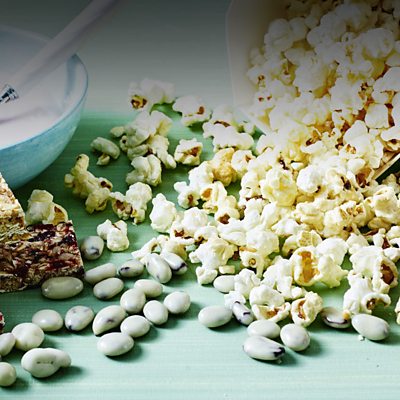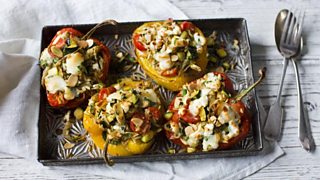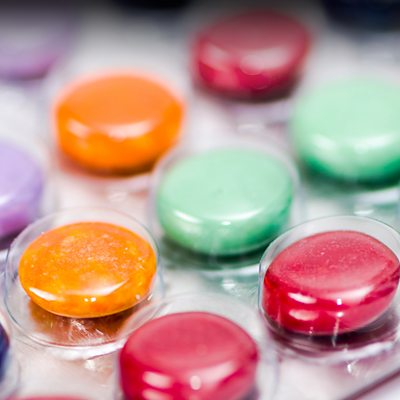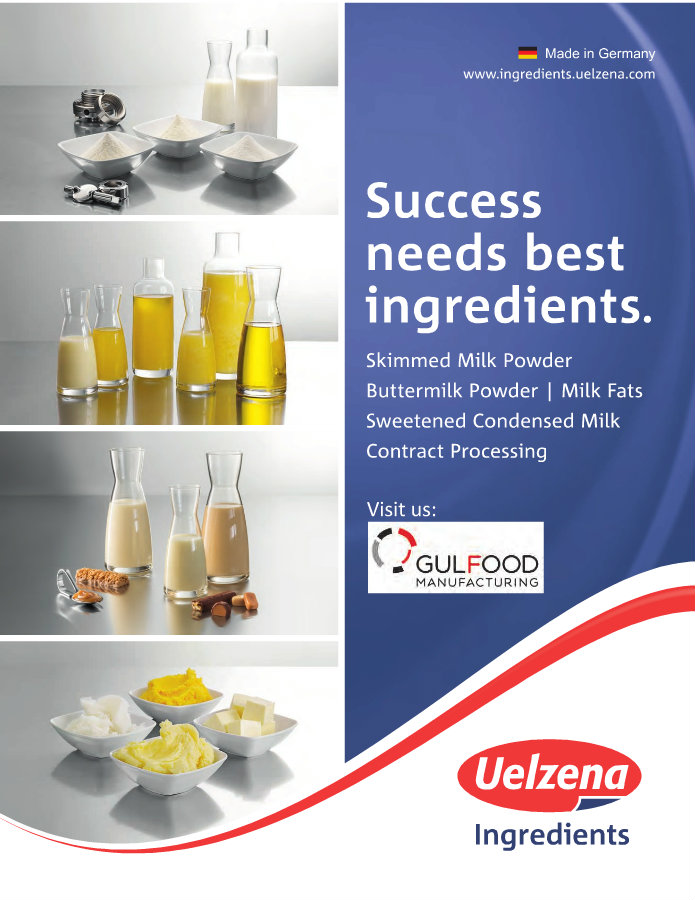1.Label maze
We’ve all been there, tired after work, desperately scouring the supermarket aisles for a semblance of supper. Faced with aisle upon aisle of choice, we rely on external cues to help us make quick decisions. Labels such as "natural" and "low fat" silently seduce us.
But are food labels leading us down the garden path, for instance promising "low fat" while piling on the sugar? Can they even affect how we digest our food, leading us to eat more?
2.What do the labels actually mean?
Click or tap on the image below to find out what "low fat", "low sugar", "natural", "organic" and "superfood" mean.
We think we make roughly 15 decisions about food and drink every day, but we actually make up to 200. To reduce our cognitive load, we turn on autopilot and rely on beliefs such as ‘fat is bad’, therefore ‘low fat is good'. Companies exploit this with ‘health haloes’ on front labels, which can lead us to overestimate how healthy a food is, based on a single claim. Unfortunately they can discourage us from reading the nutrition detail on the back label. It's important to know what these claims actually mean so we can make informed decisions about what we eat.
3.All in the mind?
We've established that food labels can trick the mind, but what about the body?
In a recent study, vanilla milkshake was packaged in two different bottles. One bottle was labelled "Sensishake" and claimed to be a low-calorie drink with 0% fat, no added sugar and 140 calories. The other bottle was labelled "Indulgence" and advertised as a rich treat with 620 calories. In truth, both drinks had 380 calories.
This study measured the participants' level of ghrelin, the ‘hunger hormone’ whose levels drop in the body after a big meal to signal to your brain that you're full. When individuals drank the milkshake labelled "Indulgence", their ghrelin levels dropped three times further than when they drank "Sensishake".
The difference in ghrelin response was consistent with what would happen if the individuals actually consumed drinks with different calorie counts. In short, when individuals thought they had consumed more calories, their bodies responded as if they had actually consumed more.
Placebo effect
This is linked to the placebo effect – often patients feel better after consuming a dummy pill because they believe the pill contains active ingredients. The latest science suggests that real changes take place inside our bodies when we take dummy pills.
4.Location, location, location
Can the location in which we buy and consume food affect us in a similar way to labels?
Research has shown that when people eat at a fast food chain they perceive to be ‘healthy’ (even if it isn't), they greatly underestimate calories consumed compared to when they eat somewhere they believe to be 'unhealthy'.
Want more calories with that?
Research suggests that we may order more side dishes, drinks and desserts when we are eating out somewhere we believe is 'healthy'. If you have a salad for dinner, do you think you deserve a slice of chocolate cake?
Compensating calories
In a sense we are trading calories – we think, 'if I have a low-fat snack I can eat more of it'. One study showed that individuals ate 35% more of an oatmeal cookie when it was described as healthy. This is linked to studies that show people eat more after working out because they think they have earned it. This is dangerous because we are bad at estimating how many calories are in a food. Test your calorie awareness in the next step.
5.Do you know your calories?
Food labels and the locations where we buy and consume food can trick us into thinking food is healthier than it is. How many calories are in the items below?
Bacon butty
Set the scene - you're in a greasy spoon the word "healthy" is not written anywhere.
Banana and yoghurt muffin
Set the scene – you're in a trendy coffee shop and lots of people have yoga mats.
Bowl of cereal with milk
Set the scene – the box of cereal displays the words "Healthy" and "Good source of fibre".
6.What can you do?
We tend to think of food as either 'healthy' or 'unhealthy', and labels can confuse the matter further. One study showed that people believed a particular hamburger had 761 calories, but when a carrot and celery salad was added to the same burger, people believed it had 583 calories. In essence, adding salad to the burger made it seem less calorific in the same way that sticking a "low fat" label on yoghurt does. But a burger is still a burger and organic ice cream is still ice cream.
We need to adopt a holistic approach to food and focus on eating a balanced diet. A front label only gives limited information and it's important to read the ingredients list at the back. Even if you are trying to reduce the fat in your diet, eating food with the fat swapped for sugar will not necessarily be better for you. A great way to eat better is to cook for yourself so you know exactly what you're eating. Click on the "Healthy recipes" link in the "Where next?" section for some inspiration.
7.Where next?

Do diet foods make you fatter?
 Read
ReadHealthy recipes

How do supermarkets tempt you to spend more money?

Feed your curiosity with BBC iWonder

How can a dummy pill have a real effect on your body?




